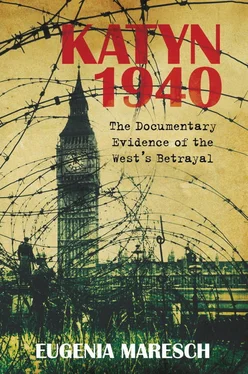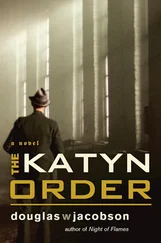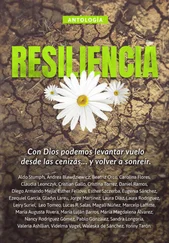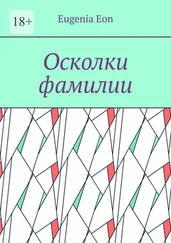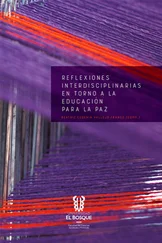The presence of lumps of calcium and pressed spruce cones among the bodies in grave No.I led to the supposition that this grave had been open for a longer time and the layers of bodies had been sprinkled with some calcium compound, most probably calcium chloride, in order to prevent premature decomposition.
After separation of individual bodies from the mass, bodies were placed on wooden stretchers and lifted to the surface and laid out in rows on the ground. Usually in the course of the day 70 to 120 bodies would be lifted in this way. The largest number we ever lifted was 160, on average 100 bodies were lifted from the graves. In principle we aimed at reburial of corpses the same day and in the same order. But because Russian prisoners from Smolensk were working in these graves, over whose arrival or failure to arrive at Katyn we had no control, sometimes the bodies after examination lay unburied for a while longer. I had the impression that was done deliberately by the Germans, because it happened most times before the arrival of a major party of visitors at Katyn, thus making a striking impression on anyone coming for the first time.
2. Examining the Bodies and Determining the Cause of Death
Originally, I personally conducted the examination of all the bodies dug up from the graves, in order to determine the cause of death and its circumstances; especially with a view to collecting material with which to answer the seven principal medico-legal questions:
a. Who was murdered
b. When the murder was committed
c. Where the murder was committed
d. With what instrument
e. In what manner
f. Why
g. Who committed the murder
On account of this, my work was considerably extended beyond that of the normal examination. I had to be present at the lifting up of the bodies, observing on the spot their position and the relationship between the degree of putrefaction and the layer of soil in the mass graves. I had also to be present at the searching of the bodies and to take special interest in the last noted date in the diaries, certificates of anti-typhoid inoculations, of the letters received or not yet sent by the prisoners, also the dates of the newspapers found in pockets and other circumstances which might be significant for the overall evaluation of the crime.
The most important part of the work was the examination of the bodies themselves. As a rule, Ferdynand Płonka assisted me. After having shaved off the hair on the back of the head, we found, generally, the width of two fingers below the occipital protuberance, most often in the mid axis of the body, an entry wound in the form of a round aperture, with a diameter of about 8 mm. After cutting the skin, a bullet channel could be seen, running forwards and upwards into the cranial cavity, through the base of the occipital bone. After the entry aperture had been cleared of soft tissue, its diameter was measured by means of a metal rule and was generally not quite 8 millimetres. The entry aperture was characterized by smooth outer edges, which expanded crater-like towards the interior of the cranium.
After the examination of the entry wound, we looked for the exit wound, which was almost always located on the forehead of the victim, more or less at the edge of the scalp, sometimes in the mid axis line of the body and sometimes a little to the right or left. Greater dimensions than those made by the bullet’s entry characterized the exit wound. The diameter was sometimes 15 mm and the rough edges sometimes contained small bone splinters in them. After the measurement, the skin was cut open, the edges of the bone aperture cleansed of the soft tissue and measured. It generally had the form of a truncated cone, base facing upwards. The outer edges of the aperture were rough and the diameter varied from 1 to 1.5 cm. By means of a probe, the direction of the shot was determined and it was established that it had usually damaged the vital centres in the medulla causing the instantaneous death of the victim. In some cases the cranial cavity was opened up and the pre-agony reaction established, which took the form of large, rust coloured haemochromogen [sic] deposits at the base, on account of the haemorrhage into the cranial cavity. After the skin and soft tissue was cut, often bloody stains, enchymosis, were found in the vicinity of the entry wounds. In about 0.2 % [sic] of the bodies examined, revolver bullets of 0.75 mm calibre were stuck under the skin of the forehead or in the exit wound. The length of the body was then measured and examined for other lesions, which would testify to a struggle with an aggressor before death.
In order to determine the location of the crime we searched for cartridges in the graves, as well as close to them, and found a large number under the spruce needles in the vicinity and scattered among the bodies within the graves. This fact permitted us to assume that the crime was committed in that place, adjacent to the the graves. Also the large number of bullets stuck in pine trees, growing close to the edge of the longer arm of grave No.I and at a height of 1.5 to 2 metres from the ground, led us to suppose that a number of executions were carried out after the victims had been led to the aforementioned pine trees. The question of the cartridges was at the beginning passed over in silence by the Germans, on account of the fact that the ammunition used by the perpetrators of the crime had been of German make. The Germans evidently did not want a question raised about the origin of the weapon, which the layman normally associates with the perpetrator of the crime, in connection with their extensive propaganda.
From the medico-legal point of view, it is a well-known fact that in cases of premeditated crime the perpetrator as a rule uses a foreign weapon in order to divert inquiry into the wrong channels. Originally, I kept the cartridges and bullets found in the graves, but evidently the Germans noticed this. Once when I was searching for them, OLt Slovenzik approached me and asked what I thought about the ammunition with which the Polish officers had been shot. I said that it was of German origin, calibre 7.65 with a trademark ‘Geco’ series D; Slovenzik immediately replied that the Germans had supplied large quantities of this ammunition to the Baltic States. In any case that was the weakest point of the German propaganda and because of this they did not allow visitors to take any empty cartridges they found. The rule did not apply to the Technical Committee.
It was understandable that one doctor could not bear the weight of the work and I approached OLt Slovenzik and Professor Buhtz several times, asking them if it was possible for at least two more medico-legal experts to come to Katyn. I mentioned to them that before my departure to Katyn, I was assured by Dr Schebesta that those three doctors from Warsaw, Kraków and Lwów would be coming along. It was not only the amount of work but the great responsibility on those who were carrying it out. I took this opportunity to mention Professor Jan Olbrycht, a great authority on the subject, who was imprisoned in Auschwitz and who could be freed to help out in the work. Slovenzik accepted the suggestion but a week later informed me that the Ministry of Propaganda in Berlin had not agreed to my proposal to free Professor Olbrycht. As a result I remained alone until the end of the work; having examined about 800 bodies, I was not able personally to conduct further examination of exhumed bodies. I confined myself to a thorough examination of only those bodies on which no documents were found and which were listed as N.N. [ Nicht Namen – without name]. In such cases I only measured the length of the corpse and recorded dental particulars, and the age based on the length of the narrow cavity within the head of the humerus. Clothes were described and special attention was paid to monograms and trademarks. In cases where the height could not be established because of decomposition, I measured the length of the two long bones in order to determine approximate height, an accepted formula in forensic medicine. Of the more interesting cases, those that differed from the norm, I took photographs, for instance signs of a shot having been fired from close range or bullets being stuck in the exit wound or the body lying in an unusual position, as in grave No. II.
Читать дальше
